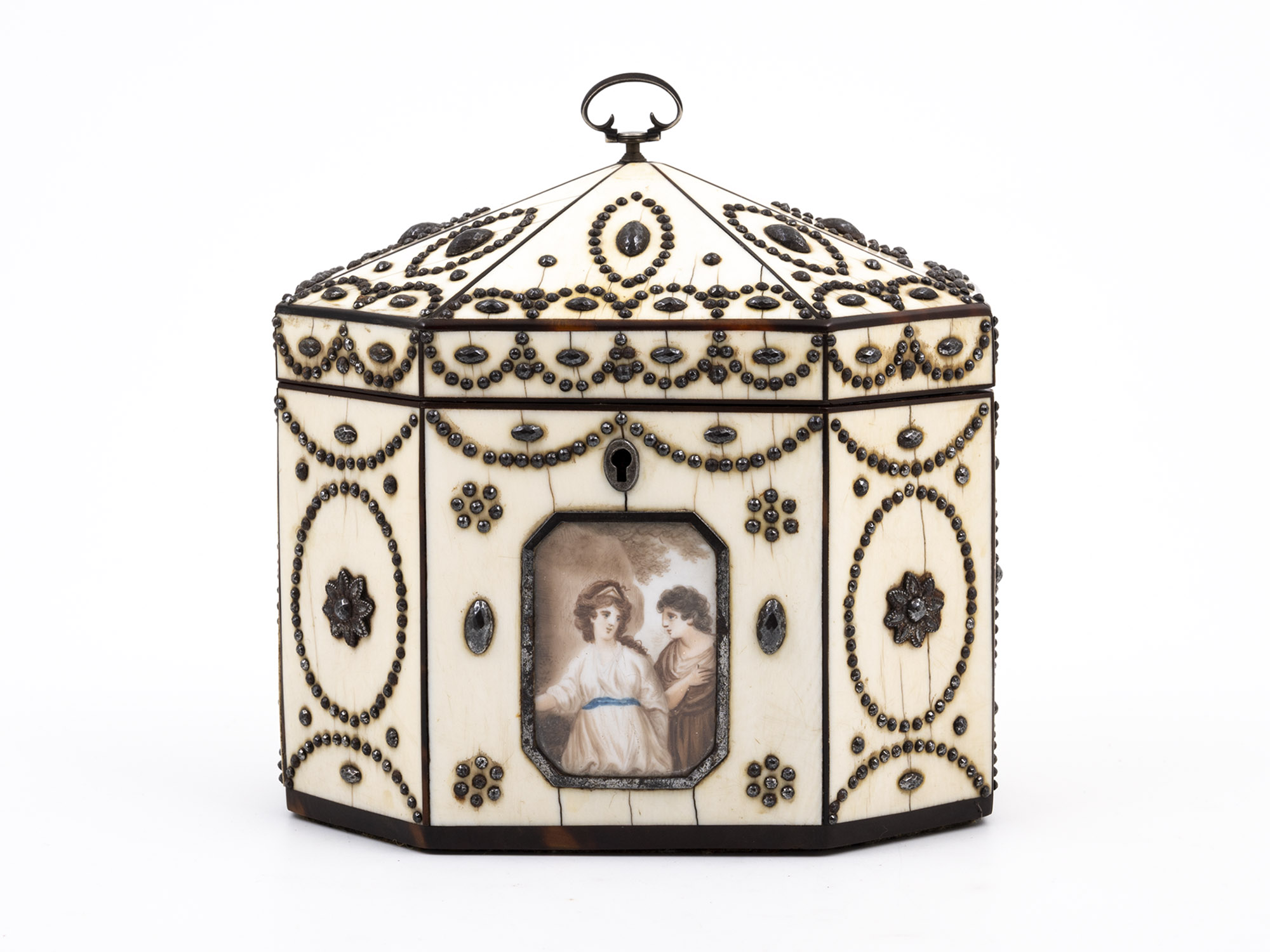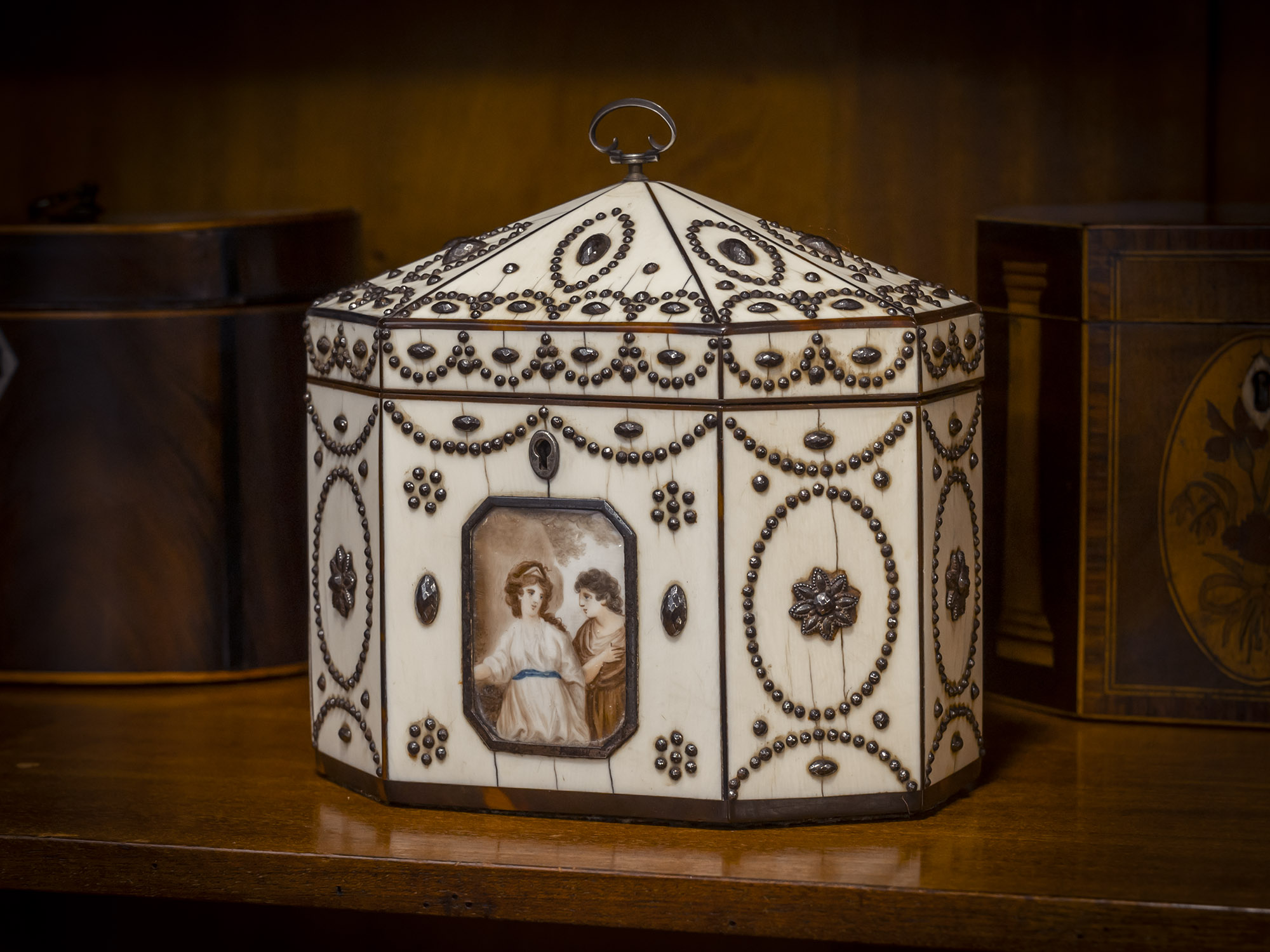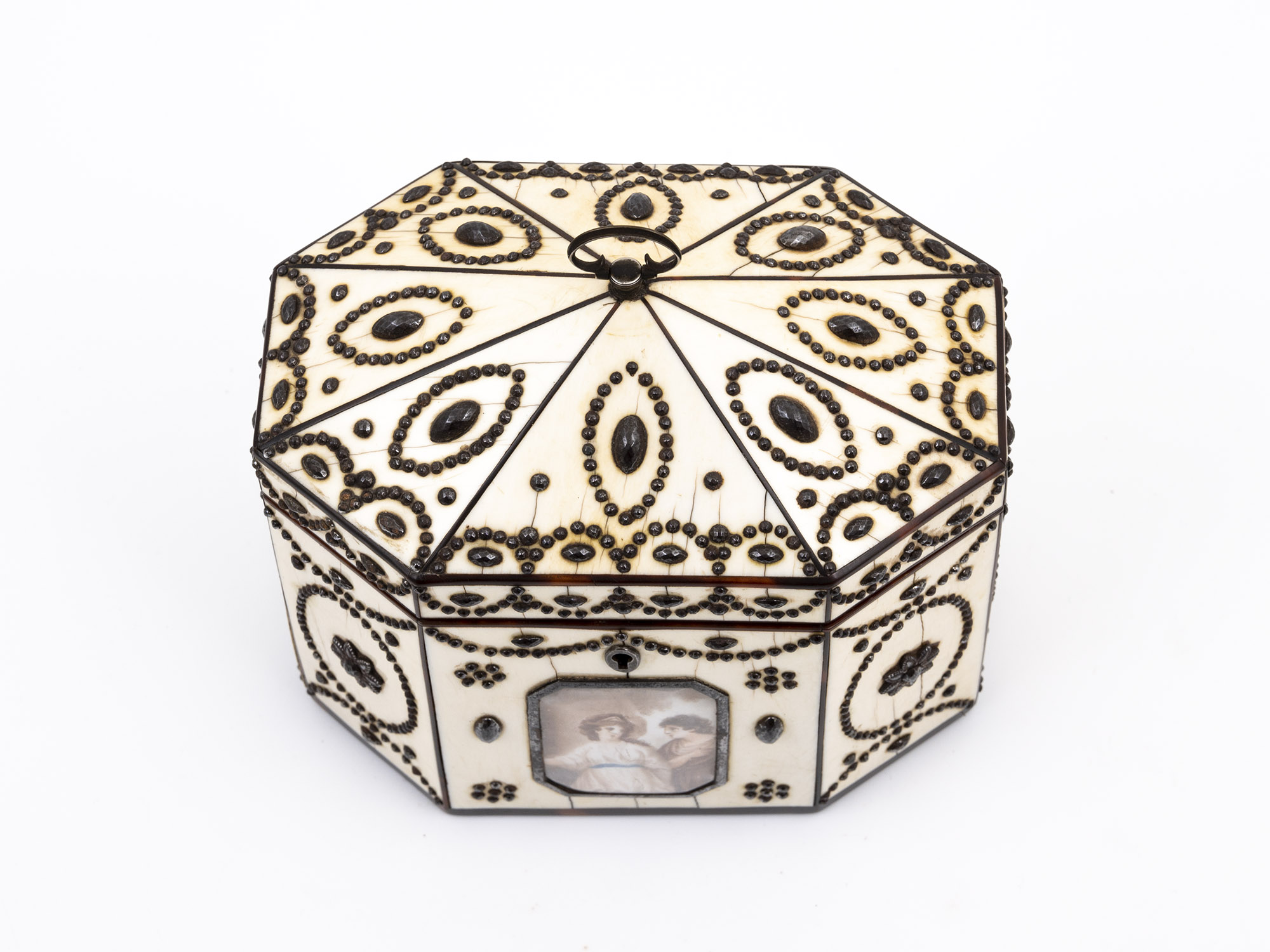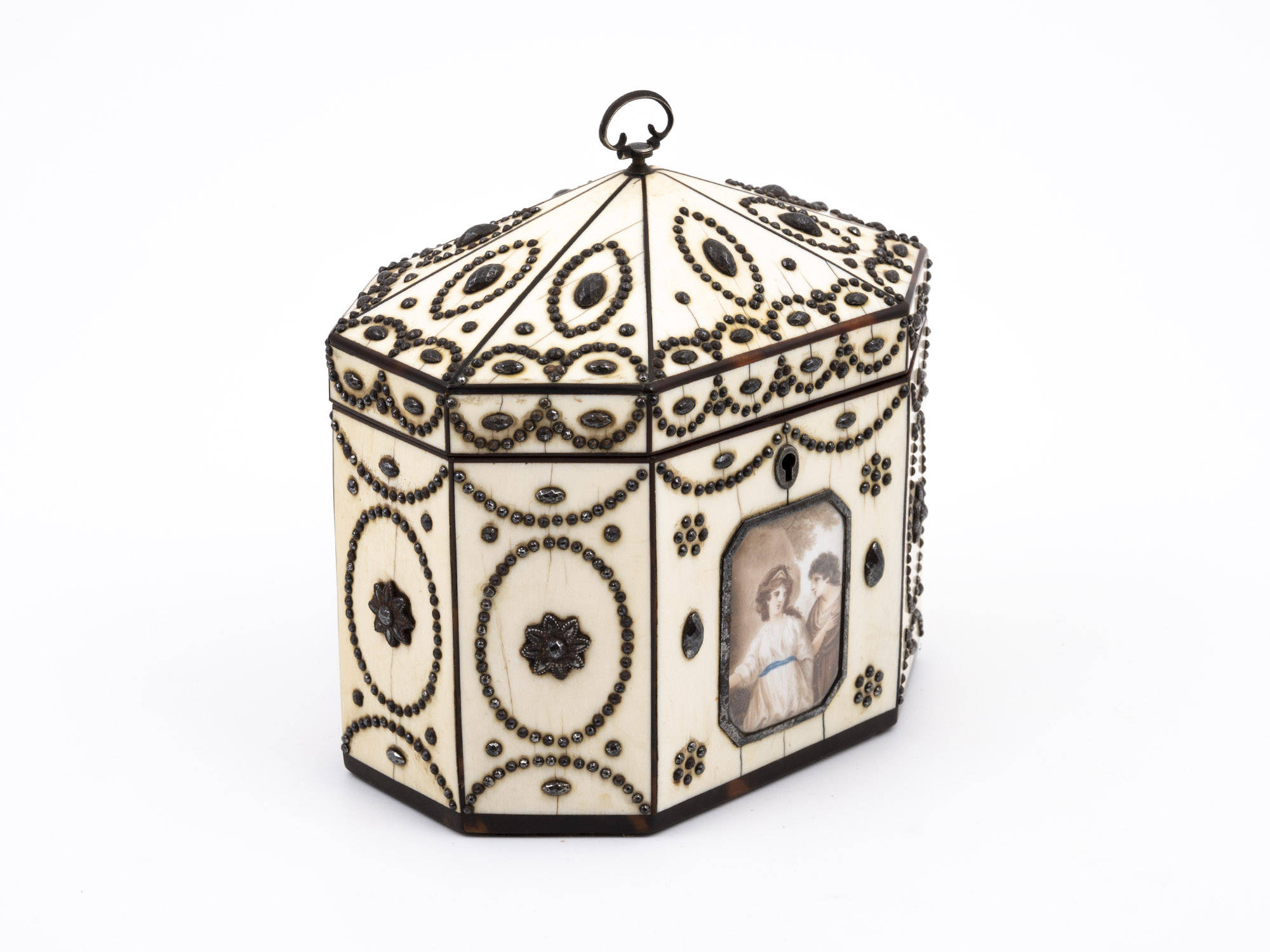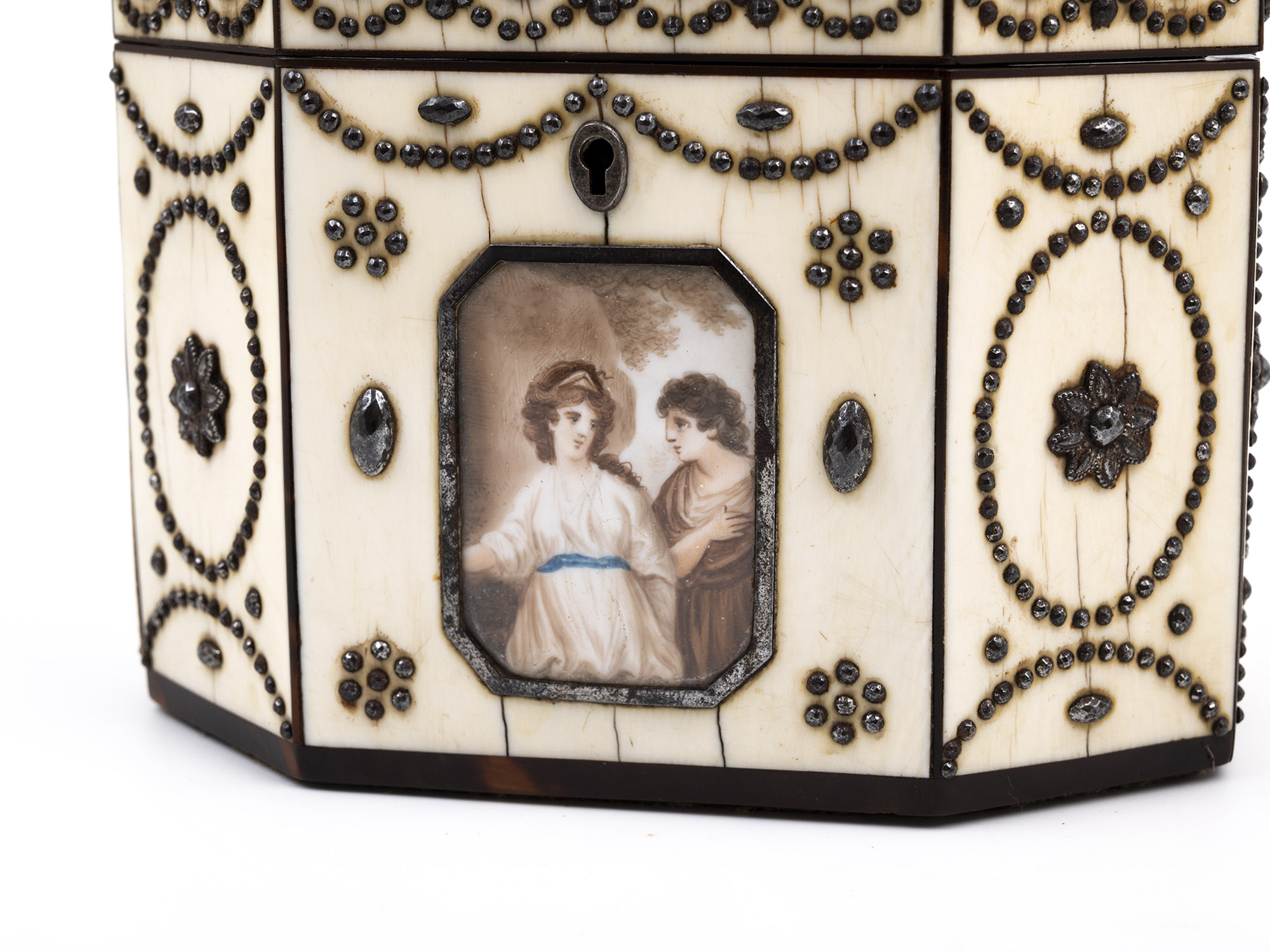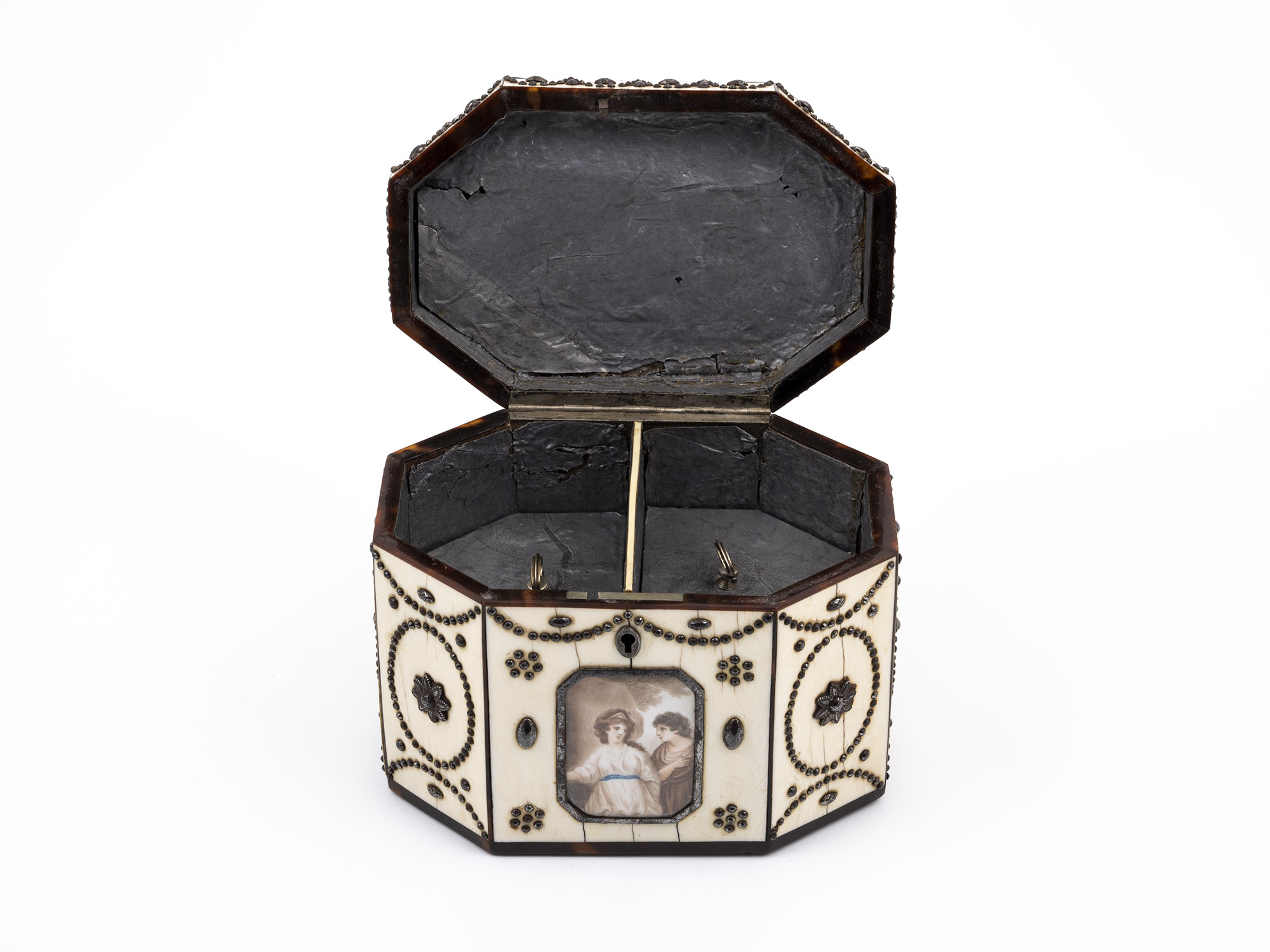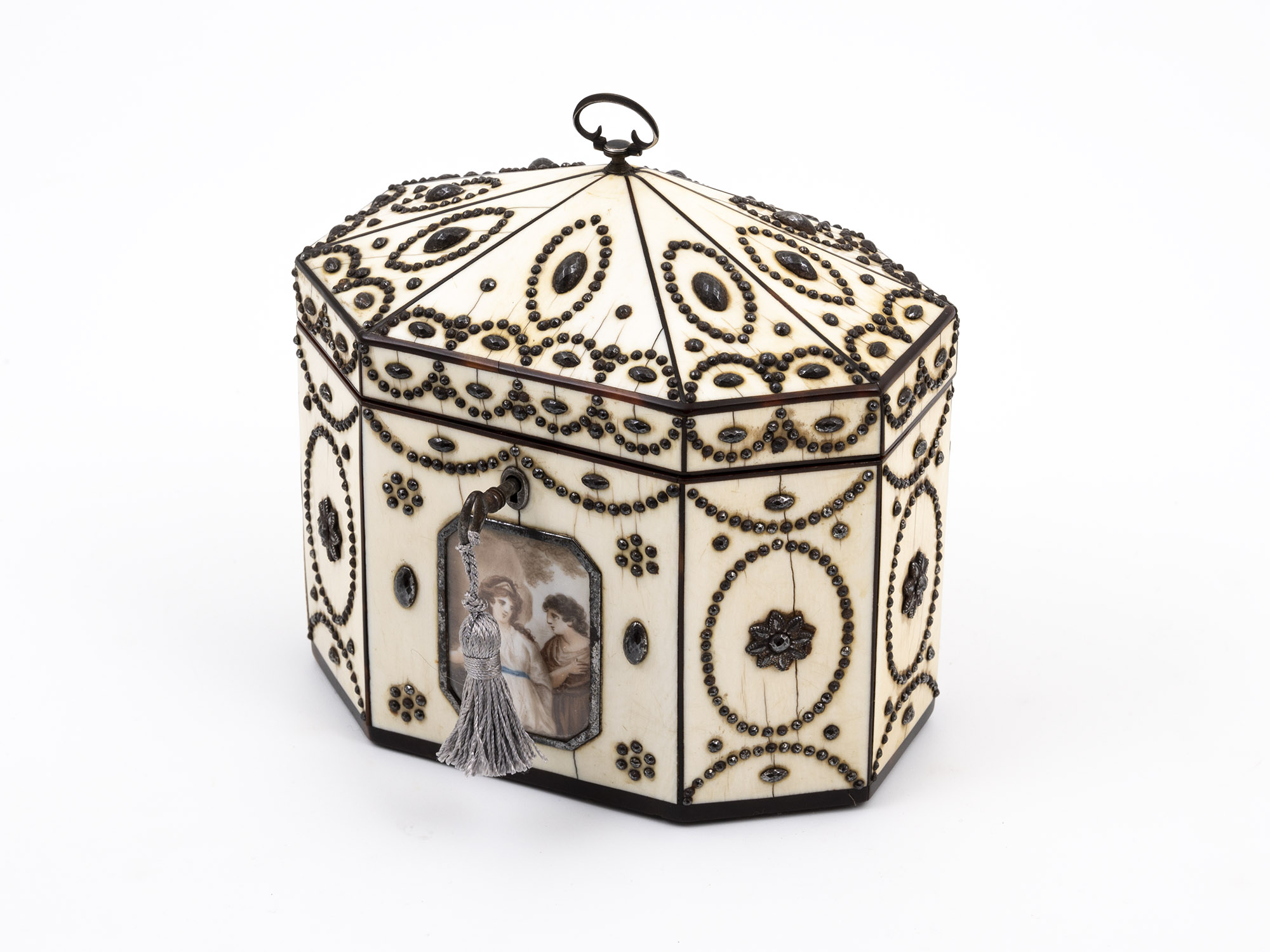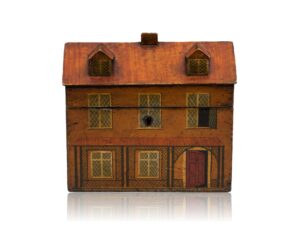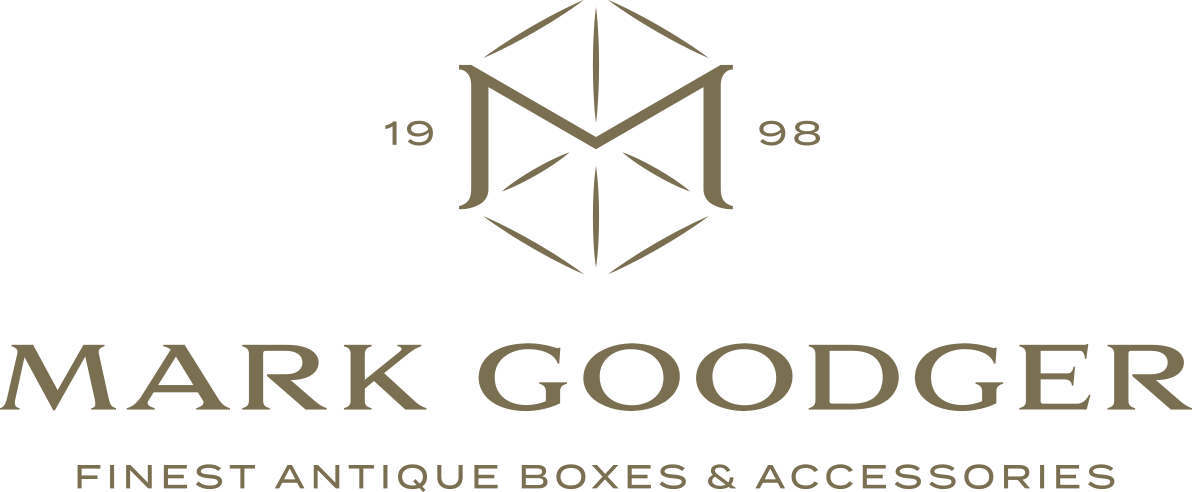Rare Ivory Cut Steel Tea Caddy
SOLD
Very rare ivory octagonal tented top Tea Caddy with faceted cut steel decoration and tortoiseshell edging. Behind cut steel framed glass is a painted plaque of a young courting couple. The top has a silver looped handle, and the interior... Read More
| Dimensions | 14 × 9 × 13 cm |
|---|---|
| Period | |
| Country | |
| Provenance | |
| Cites | VEHRK4BD |
| SKU | 321719 |
Description
Description
Very rare ivory octagonal tented top Tea Caddy with faceted cut steel decoration and tortoiseshell edging. Behind cut steel framed glass is a painted plaque of a young courting couple. The top has a silver looped handle, and the interior is faced in tortoiseshell and contains two floating lids with smaller silver handles.
Click IVORY CADDY to view it on our Youtube channel.
Cut steel in the 1700s was famously produced in Woodstock, Oxfordshire using horseshoe nails which were re-used to create beautiful polished, faceted studs. They were initially sold in London and the local area, but word quickly spread about their fabulous quality, and they were soon being exported around the world including Russia and France. Steel decoration went on to evolve in Tula, Russia where steel itself was already being used to produce household items, accessories and ornaments. Tula steelwork was a favourite of Catherine the Great (1729-1796), thereby increasing its popularity and desirability. It was used often in France, specifically to decorate souvenir boxes sold in the Palais Royal area of Paris in the early 1800s. These ‘objets’ would command high prices, due to the intricate and labour-intensive techniques used. By the late 1800s, the steelwork trade moved on to London, Wolverhampton and the Birmingham area.
Some items we offer for sale incorporate or are made from antique elephant ivory. We deplore the illegal poaching of elephants, but it is important to understand that any antique items made from ivory that is offered for sale by us were created at a time when ivory was a widely available material. African and Asian elephants then existed in such large numbers that their survival in the wild was not threatened. Since Roman times ivory has been used by craftsmen as a singularly responsive material with its subtle, glowing colour. It can be cut, carved or etched and has been used for hundreds of years to create historically and religiously significant works of art, as well as many objects of a more utilitarian nature. The value of all these objects lies in the craftsmanship applied to their creation and not in the ivory material itself.
Genuine antiques containing worked ivory can be sold in the UK. Should you wish to take antiques containing ivory to a country outside the UK it will be necessary to obtain CITES permits for them in advance of shipment. This is a straightforward process with which we will be happy to assist, please allow 30 days and further costs.
With every purchase from Mark Goodger Antiques, you will receive our latest catalogue, a Certificate of Authenticity, detailed care instructions for your chosen piece and an independent invoice (for insurance purposes) will be enclosed. As well as being protected by a no-hassle, money-back policy, your piece will be entirely insured during the shipping process to ensure the safety of your item.
Additional information
Additional information
| Dimensions | 14 × 9 × 13 cm |
|---|---|
| Period | |
| Country | |
| Provenance | |
| Cites | VEHRK4BD |
| SKU | 321719 |
